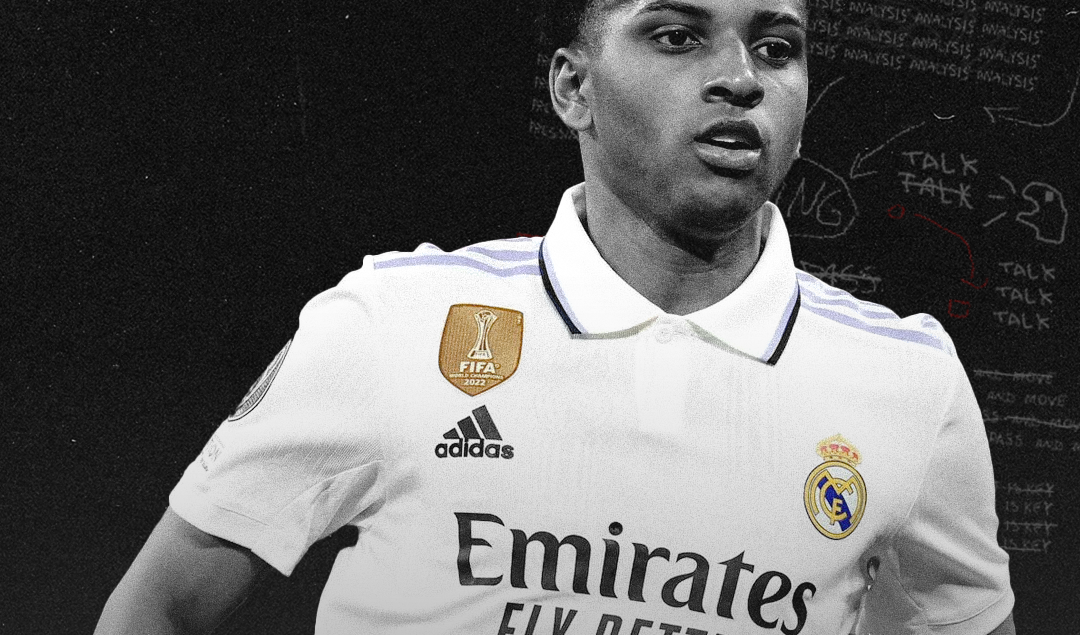Tactical Observations from the First Clasico of the 2023/24 Season
In epochs gone by, El Clasico stood as a battlefield among gods, an epic exchange that even the demi-gods deemed worthy. Legends, etched in the grains of time, were born from the clashes that transcended the mortal realm. Today, however, it stands diminished, a mere mortal’s contest, a fading echo of its once divine essence.
Yet, within this seemingly mundane spectacle, a symphony of wits and tactical prowess unfolds. It’s a realm where the magic of football, once divine and universal, finds an earthly vessel in the form of Jude Bellingham. In this contemporary arena, he emerges as a sorcerer, weaving spells of brilliance and enchantment, reminding us that even in the shadows, football’s celestial echoes can still be heard. Welcome to the modern saga of the Classico, where the mundane collides with the magical, and the extraordinary persists in the ordinary.
Barcelona’s tactical blueprint revolved around numerical superiority at every stage of the game. During their build-up, they adopted a strategy where one of their three center-backs ventured just beyond the box, while the other two remained deep within the box alongside the goalkeeper. This approach aimed to create an array of passing options and stay a step ahead of Real Madrid’s pressing.
Barcelona suffered their first defeat of the season last weekend, with Jude Bellingham leading Real Madrid to a comeback win.
However, there were still plenty of positive signs to take from the Blaugranas’ performance.@dharnishiqbal analyzes El Clasico: https://t.co/UoH7fuU5eW pic.twitter.com/420ANhdmN7
— Breaking The Lines (@BTLvid) November 5, 2023
For instance, when Andreas Christensen advanced out of the box, Vinicius Jr. would closely track him, while Rodrygo Goes would press Barcelona’s goalkeeper, Marc Andre Ter Stegen. On alternate occasions, Rodrygo assumed the role of pressing Christensen, and Vinicius Jr. focused on pressuring Ter Stegen. When the Barcelona goalkeeper faced pressure, he could efficiently distribute the ball to either of the two center-backs positioned on either side of him.
Once the ball reached the central defenders, Barcelona had the opportunity to engineer 2v1 situations against Real Madrid. For instance, if the ball was played to the left-sided center-back, a Real Madrid midfielder would leave the midfield to press him, and the passing option for the defender would be the wing-back, Alejandro Balde, on the left flank. Ideally, Dani Carvajal would have neutralized Balde, but the threat of Joao Felix dropping to the left wing and exploiting space kept Carvajal pinned, providing Balde with the freedom to receive passes.
In the midfield, Barcelona used a box midfield formation countered by Madrid’s man-to-man pressing. The absence of Robert Lewandowski led to the introduction of Ferran Torres as a false 9 in the XI, adding an extra man in midfield and passing options. Madrid’s man-oriented press created challenges for them, as Barcelona could manipulate them to focus on the left and then switch play to the open space on the right, where Joao Cancelo found acres of space and exploited Mendy, the Madrid full-back.
The essence of positional play is to stretch the pitch by having wingers or wing-backs drag the opposition full-backs out of position, creating gaps for the central midfielders to exploit. Real Madrid reacted by shifting a midfielder into defense during the defensive phase, aiming to have five defenders against Barcelona’s five attackers. Federico Valverde assumed the role of an auxiliary right-back, allowing Carvajal to mark Joao Felix closely.
This new structure by Real Madrid, however, created a weakness in midfield, and Barcelona exploited it by progressing the ball through the left-sided center-back. This allowed Barcelona to create a numerical overload on the left side of midfield and consistently find spaces between the lines. The absence of a traditional striker, like Lewandowski, meant that although Barcelona created numerous goal-scoring opportunities, they lacked a pure center forward to capitalize on them.
Defensively, Barcelona departed from their usual aggressive pressing style. Gavi was tasked with shadowing Bellingham throughout, and this proved effective for several reasons. When Toni Kroos was in midfield, he often dropped into the defense to create a back three in the build-up. If Kroos was pressed, Bellingham dropped deeper to receive the ball from him, and if not, he made runs from midfield to support Vinicius Jr. and Rodrygo. Gavi’s marking of Bellingham effectively nullified his influence, aside from two exceptional moments that changed the game.
However, when Luka Modric played in place of Kroos, and Eduardo Camavinga was also on the field for Real Madrid, Bellingham operated differently, making runs into the box and operating between the lines. In the aftermath of the Clasico’s crescendo, Real emerged victorious, yet the pendulum of fate continues its unpredictable sway. The result, a mere footnote in the grand narrative of the league, whispers of the riveting drama that lies ahead. As we brace for the labyrinthine journey that unfolds, this match stands as a poignant tableau—a canvas painted with the artistry of tactical mastery.
By: Tobi Peter / @keepIT_tactical
Featured Image: @GabFoligno / @GabFoligno / Pressinphoto / Icon Sport
